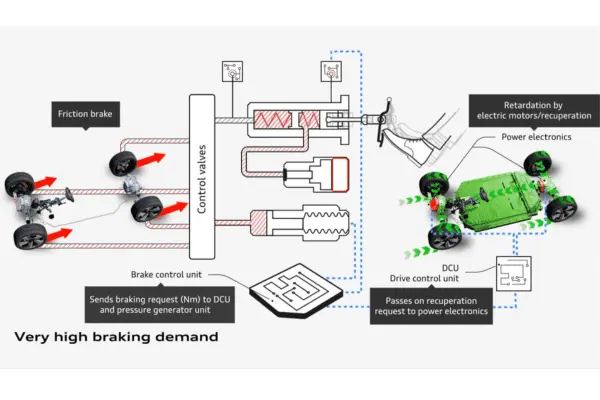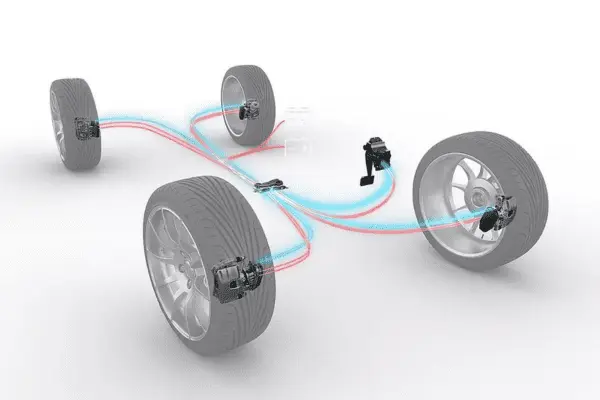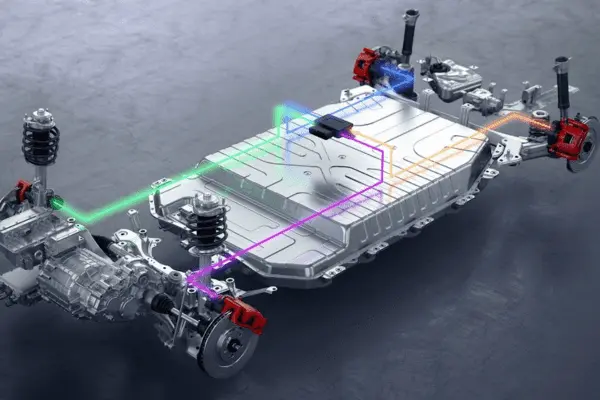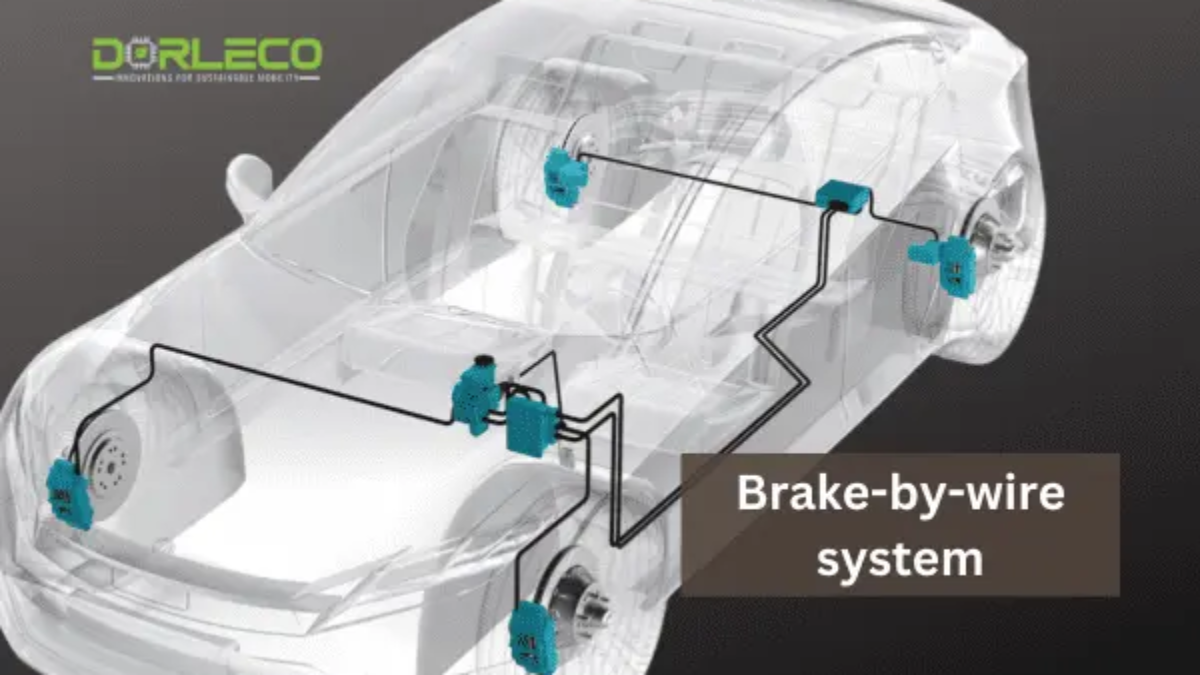Introduction to brake-by-wire system
The brake-by-wire system, which has swept the automotive industry in recent years, includes brake-by-wire. The fundamental idea behind all brake-by-wire systems is the same: by substituting electrical connections for mechanical linkages and connections, the assemblies can be made lighter, simpler, and easier to integrate. This also applies to brake-by-wire, even though it allows for the integration of numerous systems and features, including traction control, electronic stability control, and automated emergency braking (AEB), with the brake system.
In place of the conventional hydraulic system, any brake-by-wire system comprises an electromechanical or electrohydraulic actuator, a brake pedal position sensor, and a brake control unit (BCU). As a result, the mechanical link between the brake calipers and the pedals is eliminated, and electronic connections are used to apply the braking pressure.
How do you use a brake-by-wire system?
The amount and haste with which the pedal is pressed are the two pieces of information that the pedal position sensor must convey to the brake control unit. Using this information, the brake control unit determines how much braking force must be given to the wheels. After receiving the necessary signals from the control unit, the actuator performs the desired deceleration, which correlates the braking force with the required pressure.

Brake-by-wire also makes it possible to customize the brake feel for specific driving modes, which is highly helpful for the interaction between the car and the driver. Even though most systems have had a similar architecture up until this point, the type of brake-by-wire system being used can affect how the caliper is actuated.
Designing Brake-By-Wire systems with redundancy
The primary distinction between brake-by-wire systems is whether or not a hydraulic circuit is used to apply pressure to the caliper. All pedal-to-caliper connections are electronic, but the industry hasn’t yet fully embraced “dry” brake-by-wire, or caliper actuation that is solely electrical.
This is because there are concerns about the dependability of entirely electric actuation, particularly about whether or not this type of system will be able to accurately deliver pressure to the calipers.
To provide redundancy to the system, a hybrid system with one axle having a partial hydraulic circuit is employed. The electrohydraulic actuators receive the electrical signal and use their combined strength to apply hydraulic pressure to the calipers.
When the control unit detects a problem, a valve opens, cutting off all electronics and enabling a traditional hydraulic system to operate. This contributes to redundancy and raises system safety as a whole.

Safety Aspects of Wire-Based Brake Systems
Automakers can progress toward vehicle autonomy using brake-by-wire, which makes it easier to integrate the brake system with other safety measures and contributes to a safer driving experience.
1. Control of traction
The basic method of traction control is to measure wheel spin to estimate the amount of accelerative traction that is available. Then, to regulate this traction, either apply more braking pressure to a wheel that is spinning too quickly using anti-lock braking or limit the amount of power that is given to that wheel by utilizing the electronic throttle control.
Because electronically controlled braking systems allow you to adjust the amount of pressure applied to different wheels, they may be simply connected with traction control systems.
2. Control for electronic stability (ESC)
Electronic stability control is one of the most essential safety elements found in modern “smart” cars. It is just a traction control system with a few more algorithms, a more potent processor, and more electrical sensors.
When this system is engaged, the control unit controlling the motion of the vehicle makes sure that the car maintains its stability while doing particular actions. This helps to improve vehicle control by preventing oversteer and understeer, which is accomplished by adjusting the amount of braking force applied to either of the wheels on the same axles.
In the worst-case situation, the AEB system seeks to prevent or lessen the impact of a collision by activating total braking if the car still doesn’t slow down enough. Electronic control is more appropriate than mechanical control for this system since it needs to react more quickly than a typical braking technique.

3. Development of Brake-By-Wire Controls at Dorleco
Multiple safety elements can therefore be integrated with a brake-by-wire system. Granted that a brake-by-wire system that is entirely electrical can be fatal, the industry hasn’t fully embraced it yet.
However, the hybrid method will undoubtedly assist automakers in putting this technology into place and enhancing the general safety and responsiveness of future vehicles. At Dorleco, we are creating control software for brake-by-wire systems, as well as integrating and testing them in prototype cars and on a test bench.
Send an email to info@dorleco.com if you would like to talk about potential partnerships for electronically-controlled braking systems.

